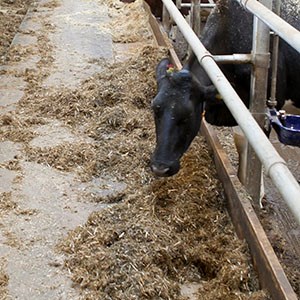Facts:
This project is completed. You can learn more about it from the Final report (summary in English on page 3):
Total mixed ration - an economic feeding strategy for organic farmers with automatic milking?

How does the feed concentration in a total mixed ration affect milking frequencies and milk yield in automatic milking systems?
Farms with automatic milking (AM) have steadily increased in Sweden over the last years and the organic farmers are no exception in this development. One of the most important factors that contribute to maintaining a high production level in AM is well-functioning cow traffic and frequent visits to the milking unit. Low milking frequencies may affect udder health negatively and a common opinion is that it also results in lower milk yield. However, there are studies showing that the relationships are unclear and the causes multifactorial.
In order to achieve a high production level, farmers are often advised not to feed silage or a mixed ration of high nutritional value at the feed bunk, because it is said to lower the cows’ motivation to visit the milking unit. It is not unusual that straw is mixed into the feed in order to reduce the energy content of the mix. Nevertheless, it must be considered a limitation for the production to not use high nutritional feeds when most farmers’ strive to harvest the crop at the optimum stage of development.
Scientific literature is scarce on how the feed concentration in a total mixed ration affects milking frequencies and milk yield in AM systems. Hence, the aim of this project is to evaluate these variables when the cows are fed mixed ration versus fed silage and concentrate separately in three different cow traffic systems.
Project managers:
This project is completed. You can learn more about it from the Final report (summary in English on page 3):
Total mixed ration - an economic feeding strategy for organic farmers with automatic milking?
Eva Spörndly, Senior Lecturer
Department of Animal Nutrition and Management, Ruminants, SLU
eva.sporndly@slu.se, +46 18 671632